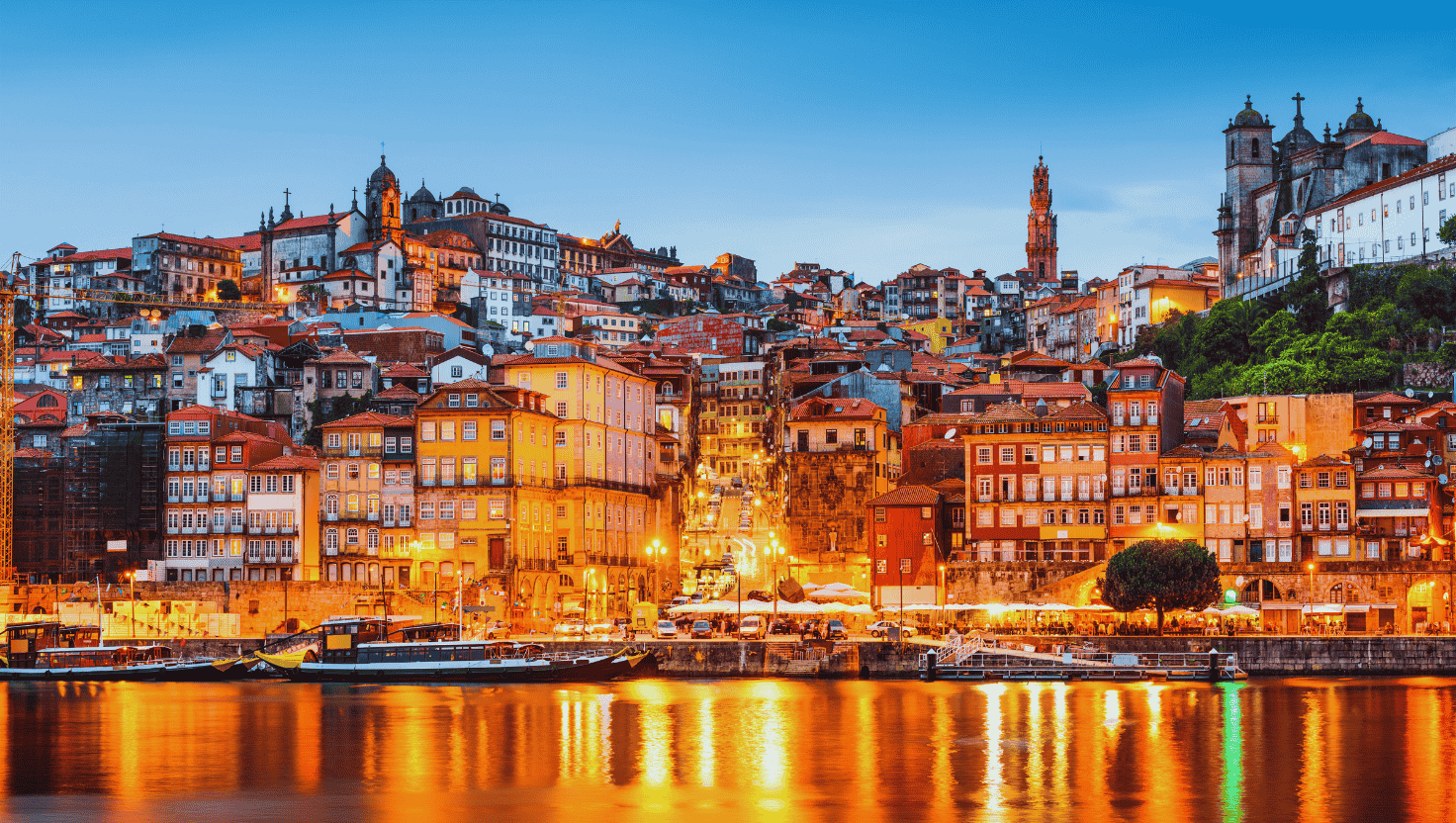
Some cities glitter, and some cities glow. Porto belongs to the latter. Its brilliance isn’t found in neon lights and glass skyscrapers, but in the reflection of the setting sun on the colourful, slightly weathered facades of the Ribeira district, in the golden glint of a glass of aged Port wine, and in the deep blue of thousands of ceramic tiles that tell stories older than we are.
Welcome to Porto, the “Unvanquished City” on the banks of the Douro River, whose soul carries the sweet weight of nostalgia, known only as saudade.
This is not a city for those who rush. This is a city for those who feel. For spontaneous romantics who find beauty in the patina of time, who delight in getting lost in narrow, cobbled streets, and who believe the best itinerary is to have no plan at all. A spontaneous trip to Porto is like opening an old, forgotten bottle of wine—you never know what aromas and stories will greet you, but you know it will be unforgettable.
This guide is your map to the heart of that experience. An invitation to dive into a world where wine, architecture, and music merge into one, creating a city that isn’t just visited, but is felt with every sense. Prepare to fall in love.
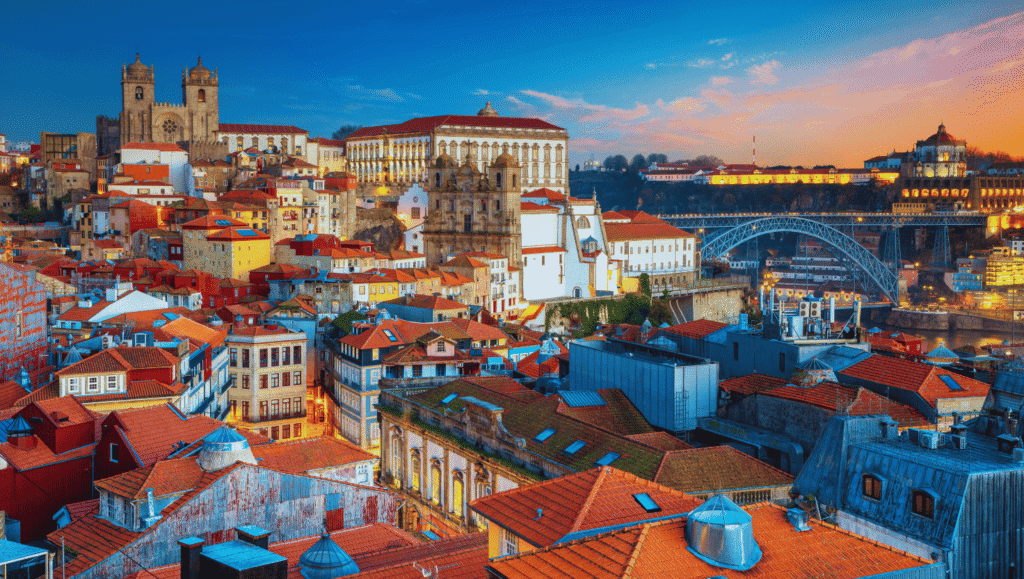
The Portuguese Compass: A Handbook for Falling in Love with Porto
Before you surrender to the city’s charms, a few practical tips will help your romance with Porto flow smoothly.
1. Arrival Porto’s airport (OPO) is modern and exceptionally well-connected to the city center by a direct metro line, making your arrival quick, easy, and inexpensive.
2. Getting Around: Your Feet and a Little Help Porto is a city that begs to be explored on foot. Its historic core is compact, but be prepared—it is very hilly. Comfortable shoes are an absolute necessity.
- Walking: The best way to discover hidden alleys, secret staircases, and stunning viewpoints (miradouros).
- Tram 1: A historic tram line that runs along the Douro River to the ocean. It’s more of a tourist attraction than practical transport, but the ride is beautiful.
- Funicular dos Guindais: Connects the lower level of Ribeira with the upper deck of the Dom Luís I bridge, saving you from a very steep climb.
3. Budget and Currency (Euro) Compared to most Western European cities, Porto is surprisingly affordable. Food, drink, and transport offer outstanding value for money. You can enjoy a glass of world-class Port for just a few euros or have a hearty, delicious lunch at a very reasonable price.
4. Where to Stay?
- Ribeira: If you want to wake up to the iconic view of the river and the Dom Luís I bridge. It’s romantic but can be noisy and tourist-heavy.
- Cedofeita: The arts district, full of galleries, concept stores, and cool cafés. A more relaxed atmosphere, ideal for those who love the city’s creative pulse.
- Bonfim: An up-and-coming neighborhood, slightly east of the center. It offers a more authentic feel and better-value accommodation, while still being within walking distance of the main attractions.
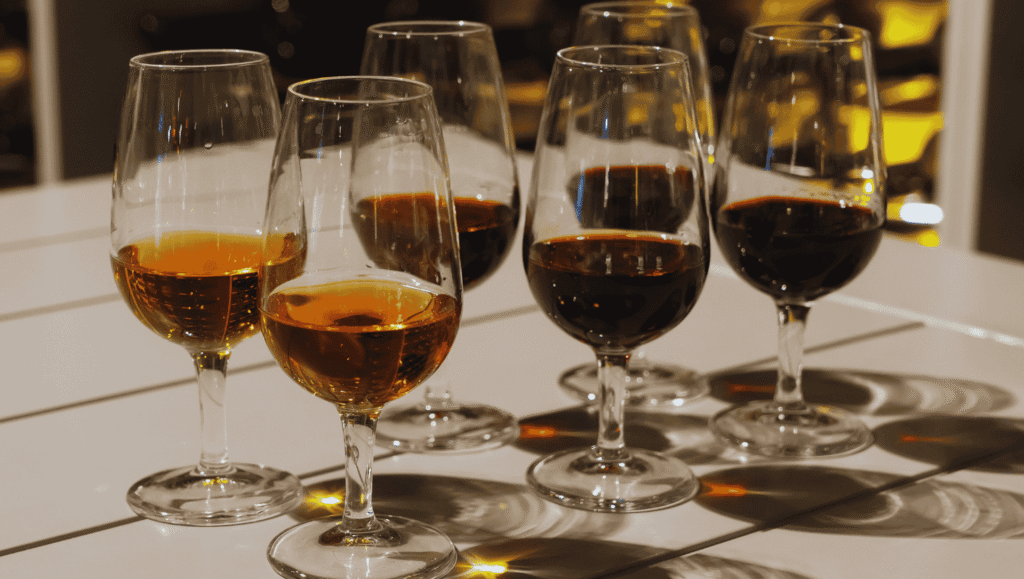
Chapter I: The Wine – The Soul of the City in a Glass
You can’t say you’ve been to Porto if you haven’t crossed the river.
Across the River to Wine Paradise: Vila Nova de Gaia Ironically, all the famous Port wine cellars are not located in Porto, but in the neighboring city across the river, Vila Nova de Gaia. From its riverbank, you’ll find the most breathtaking view of Ribeira’s colorful facades.
What is Port Wine? A Beginner’s Guide Port is a fortified wine. This means that brandy is added during the fermentation process, which stops it from finishing, leaving the wine with natural sweetness and a higher alcohol content. The essential types you must try are:
- Ruby: Young, fruity, and bright red. The basic and most accessible Port.
- Tawny: Aged in wooden barrels, it loses its red color and develops amber hues. The taste is more complex, with notes of nuts, caramel, and dried fruit. Try a 10-year or 20-year-old Tawny.
- White Port: Made from white grapes, it can be dry or sweet. Try it as a Port Tonic (white port, tonic, and a slice of lemon)—the perfect summer drink.
- Vintage: The best wine from the best harvests. It’s bottled young and matures for decades in the bottle. It is expensive and reserved for special occasions.
A Guide to the Wine Lodges:
- Taylor’s: One of the oldest and most respected. It offers an excellent audio-guided tour through its cellars and a beautiful tasting terrace with a fantastic view.
- Graham’s: Situated a bit higher up the hill (requiring a short taxi ride), it offers what is arguably the best view of the city. The tours are more intimate, and tastings are held in an elegant lounge.
- Cálem: Located right on the riverfront and very popular. It is unique for offering tours that conclude with a live Fado performance inside the cellar itself. A perfect way to combine two of Porto’s great loves.
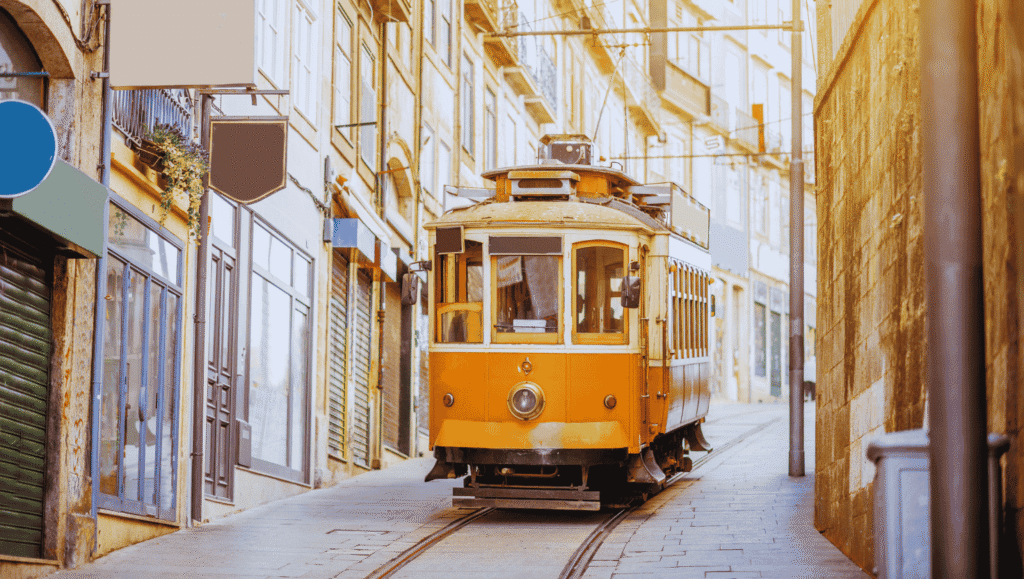
Chapter II: The Facades – Stories Told in Tile
Porto’s visual identity is inextricably linked to its architecture.
Ribeira: The Colorful Heart of Porto This is the soul of the city. A labyrinth of narrow streets and tall, colorful houses leaning against one another, with laundry drying from the windows. By day, it’s bustling with tourists and restaurants; by night, it becomes incredibly romantic. Sit on the quay, watch the traditional rabelo boats on the river, and just soak in the atmosphere.
The Art of Azulejo Tiles The blue and white ceramic tiles, known as azulejos, are a hallmark of Portugal. They are not just decoration; they tell stories of history, religion, and daily life.
- Where to see them?
- São Bento Train Station: Step into the main hall and prepare to be amazed. The walls are covered with 20,000 tiles depicting scenes from Portuguese history.
- Chapel of Souls (Capela das Almas): The exterior of this chapel on the shopping street of Santa Catarina is completely covered in tiles depicting the lives of saints.
- Carmo Church (Igreja do Carmo): Its side wall is one of the most photographed spots in the city, a magnificent panel of azulejos.
Dom Luís I Bridge: The Iron Giant This double-decker metal bridge is the symbol of Porto, designed by a student of Gustave Eiffel. You must walk across the upper level, which is also used by the metro. The 360-degree view of Porto, Gaia, and the Douro River is absolutely unreal, especially at sunset.
Livraria Lello: Magic and Crowds Often named the most beautiful bookstore in the world, its grand wooden staircase and stained-glass ceiling served as inspiration for Hogwarts. Important warning: Due to its immense popularity, the lines are huge. You must buy a voucher online in advance to enter, and it is very crowded inside. Visit if you’re a big fan, but be prepared for the wait.
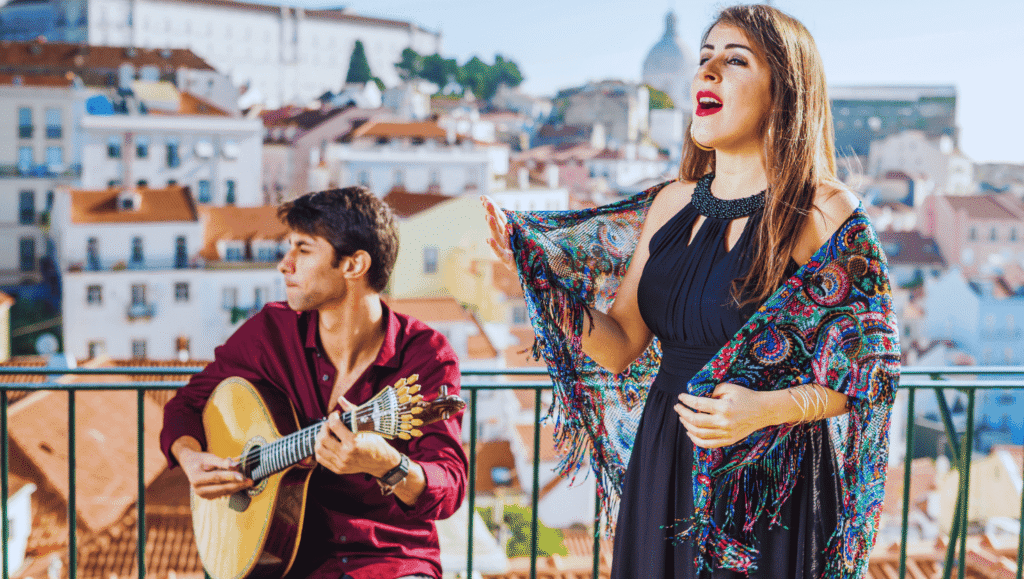
Chapter III: Fado – The Sound of Longing (Saudade)
You cannot leave Portugal without feeling the soul of its music.
What is Fado? Fado is a musical genre that cannot be translated, only felt. It is the music of longing, nostalgia, unrequited love, and fate. It is characterized by a solo vocalist (fadista), accompanied by a classical and a 12-string Portuguese guitar.
Where to Listen to Fado in Porto? Authentic Fado is heard in small, intimate spaces. Look for casas de fados in the side streets of Ribeira or Gaia. These are often family-run restaurants where you can have dinner while enjoying a performance. Show respect and remain silent during the songs.

Itinerary for a Romantic Weekend (3 Days)
- DAY 1: Wine and Views. Spend the morning exploring Ribeira and the area around the Sé do Porto (Porto Cathedral). Have lunch on the quay. In the afternoon, walk across the upper level of the Dom Luís I bridge to Gaia. Book a tour and tasting at a wine cellar. Spend the evening in Gaia with dinner and a Fado performance.
- DAY 2: Tiles, Books, and Heights. Dedicate the morning to hunting for azulejos: visit São Bento station and the Chapel of Souls. If you’re prepared for the crowds, visit Livraria Lello. In the afternoon, climb the Clérigos Tower (Torre dos Clérigos) for a panoramic city view. Spend the evening exploring the more modern and artistic Cedofeita district.
- DAY 3: The Ocean and a Sweet Farewell. Hop on the historic Tram 1. Ride along the Douro River to its mouth at the Atlantic, in the Foz do Douro district. Stroll along the oceanfront and feel the power of the wind and waves. Have lunch at a fresh fish restaurant in the nearby fishing town of Matosinhos. Return to the city center for one last Pastel de Nata.
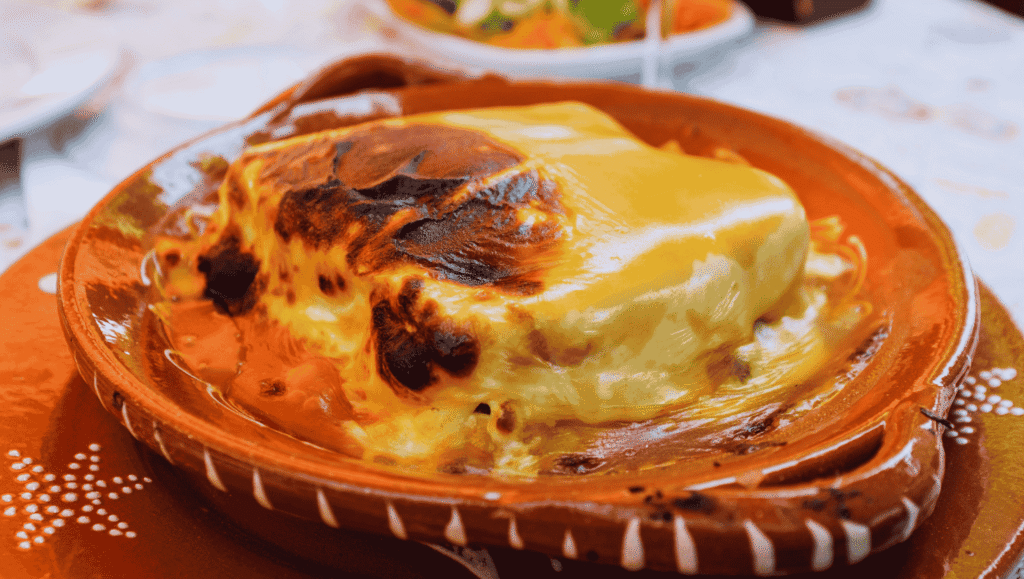
A Food Lover’s Guide to Romance
- Francesinha: The legendary sandwich-monster. Between two slices of bread, you’ll find layers of steak, sausage, and ham, all covered in melted cheese and drowned in a hot, spicy tomato and beer sauce. Served with fries. It’s a challenge, but it must be tried.
- Fresh Seafood: Porto is on the ocean. Enjoy grilled fresh fish, octopus, and bacalhau (salt cod), which is prepared in hundreds of ways.
- Pastel de Nata: The famous egg custard tart. You’ll find perfection in Porto. Eat it warm, sprinkled with cinnamon.
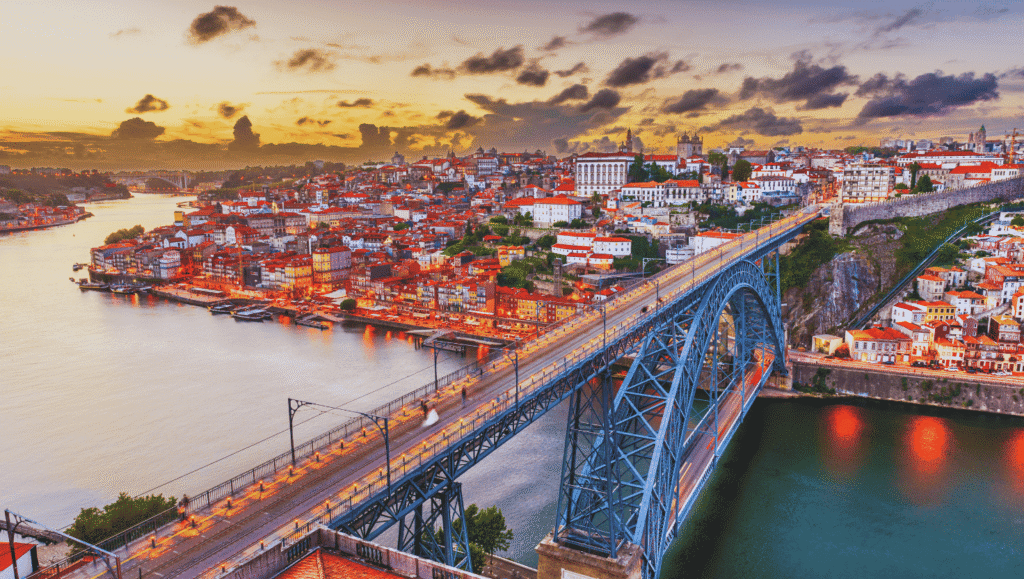
Conclusion: A City That Stays in Your Soul
Porto is not a city that leaves you indifferent. It seeps into your pores, seduces you with its slightly decadent beauty, and wins you over with its honest, unfiltered soul. It’s a city where you feel as if you’ve stepped into an old, romantic song—melancholy, but incredibly beautiful.
A spontaneous trip here is the best kind, as it forces you to slow down, to observe, to absorb. You will leave Porto with the taste of Port on your lips, the images of blue tiles in your eyes, and the sound of a Fado guitar in your heart. And you will understand that saudade is not just sadness for something that has passed, but also a sweet longing to return.

